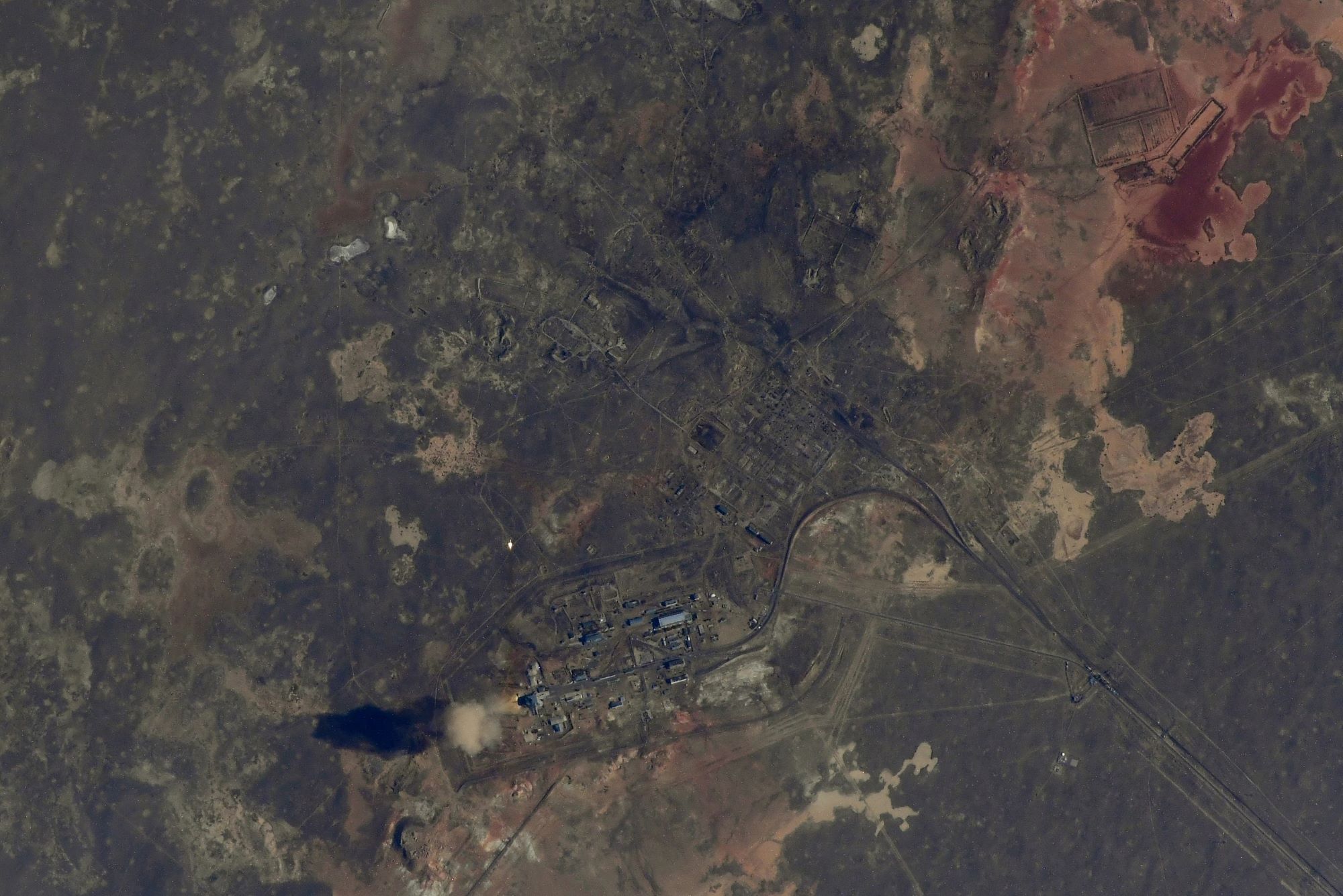[:ja]イワン・ワグナー宇宙飛行士がISSから撮影したカザフスタンのバイコヌール宇宙基地です。2021年10月4日は、スプートニク1号の打ち上げから64周年でした。

スプートニク1号は、ソビエト連邦が1957年10月4日に打ち上げた世界初の人工衛星で、コンスタンチン・ツィオルコフスキーの生誕100年と国際地球観測年に合わせて打ち上げられました。重量は 83.6kg、Спутникはロシア語で衛星を意味します。科学技術的に大きな成果となっただけでなく、スプートニク・ショックを引き起こし、米ソの宇宙開発競争が開始されるなど、冷戦期の政治状況にも影響を与えました。打ち上げは1957年10月4日にバイコヌール宇宙基地より行われ、衛星の軌道は遠地点約950km、近地点約230km、軌道傾斜角65°の楕円軌道であり、96.2分で周回しました。電池の寿命は3週間でしたが、22日後に電池が切れた後も軌道周回を続けました。しかし、近地点の高度があまり高くなかったことから軌道が下がるのが早く、打ち上げから92日後の1958年1月4日に大気圏に再突入し、消滅しました。
スプートニク1号はこちらです。

参考文献: Ivan Vagner’s Tweet
地球俯瞰画像を見る: LiVEARTH
[Earthview Wonders] No.1391: Sputnik 1🇷🇺
Astronaut Ivan Vagner captured from ISS Baikonur Cosmodrome, Kazakhstan. Oct. 4, 2021 marked the 64th anniversary of the launch of Sputnik-1.

Sputnik 1 was the first artificial Earth satellite. It was launched into an elliptical low Earth orbit by the USSR on Oct. 4, 1957 as part of the Soviet space program. It was a polished metal sphere 58cm in diameter with 4 external radio antennas to broadcast radio pulses. The satellite travelled at a peak speed of about 8km/s, taking 96.20 minutes to complete each orbit. Sputnik 1 burned up on 4 January 1958 while reentering Earth’s atmosphere, after 3 months, 1,440 completed orbits of the Earth. The satellite’s unanticipated success precipitated the American Sputnik crisis and triggered the Space Race, part of the Cold War. The launch was the beginning of a new era of political, military, technological and scientific developments.
The local scenery on the ground is as follows.

Reference: Ivan Vagner’s Tweet
See earthview photo gallery: LiVEARTH[:]